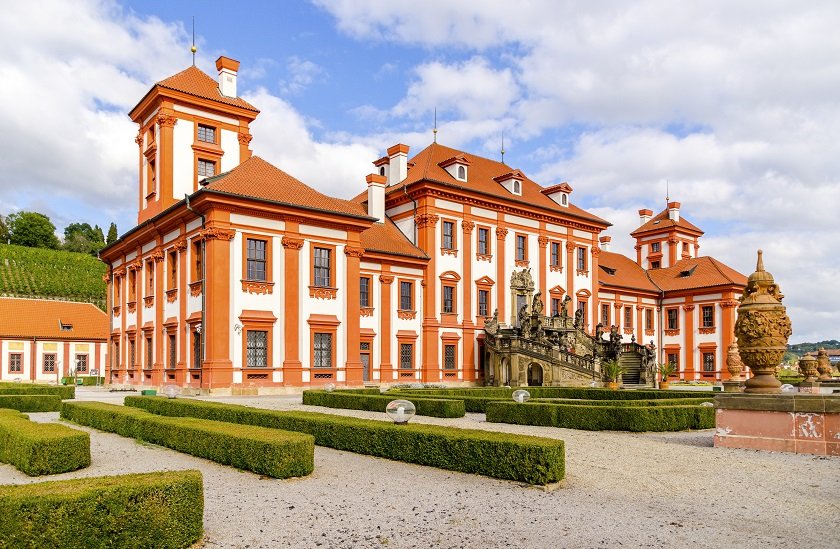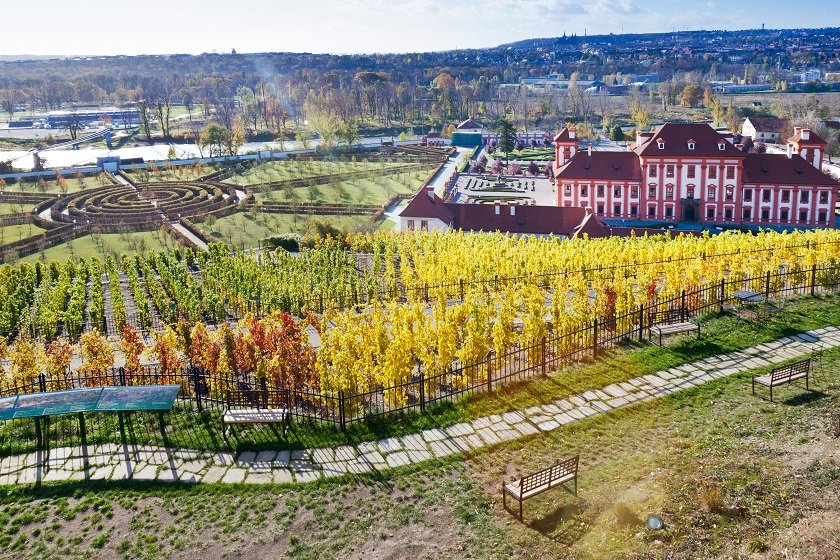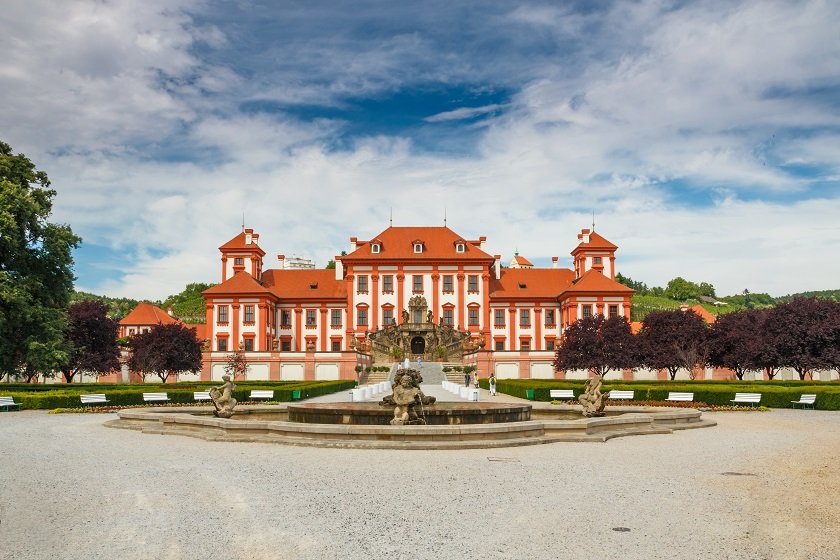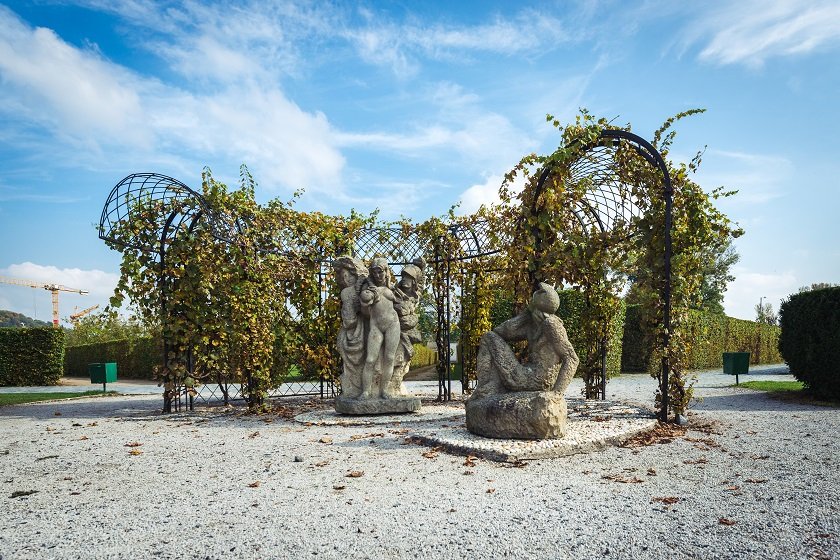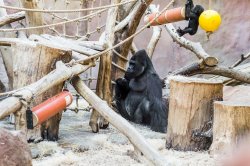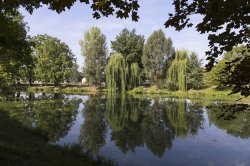Troja Palace
Troja Palace is a high Baroque building situated within an extensive French-style garden. It is located on the right bank of the Vltava River (the riverbed separates it from Prague’s Stromovka Park), with a botanical garden, the Vineyard of St Clare and a zoo in its vicinity. Count Václav Vojtěch of Šternberk ordered the construction of the palace in 1687 in order to increase his chances in obtaining an aristocratic title. It was designed by French architect Jean Baptiste Mathey, who was inspired by Italian suburban villas, so the building rather recalls a summer residence. The construction was assigned to architect Giovani Domenico Orsi de Orsiny. The nearby Vineyard and the Chapel of St Clare used to belong to the palace. The palace complex includes several farm buildings and a stable. The garden is open to the public and visitors can admire ornamental and fruit trees, a natural maze, several fountains, terracotta vases, an orangery with busts of emperors and stucco decoration. The Main Hall can be entered via the outside two-winged staircase, which is decorated with statues representing the triumph of the Olympian gods over the Titans. This is probably how the palace acquired its name.
Useful information for visitors
Public transport connections
Opening hours and admission
For up-to-date information about the admission fees and opening hours of Troja Palace, go here. The palace gardens are open to the public free of charge during the opening hours.
Interesting facts about Troja Palace
Troja Palace was also supposed to serve as a place of rest and as a residence for the emperor when fishing in the nearby Stromovka Park. For this purpose, the Main “Imperial” Hall was painted in a specific way – the main motif is the celebration of the victory of the Habsburgs over the Turks at Vienna and other historic stories related to the history of the ruling dynasty. In 1702, Troja Palace was indeed visited by Emperor Leopold I. On the first floor, there are two Chinese rooms. After an extensive reconstruction, the palace now houses collections of the Prague City Gallery. Grape harvest festivals and concerts regularly take place in the gardens. The palace halls can be rented for various events. For more information on the official website.
